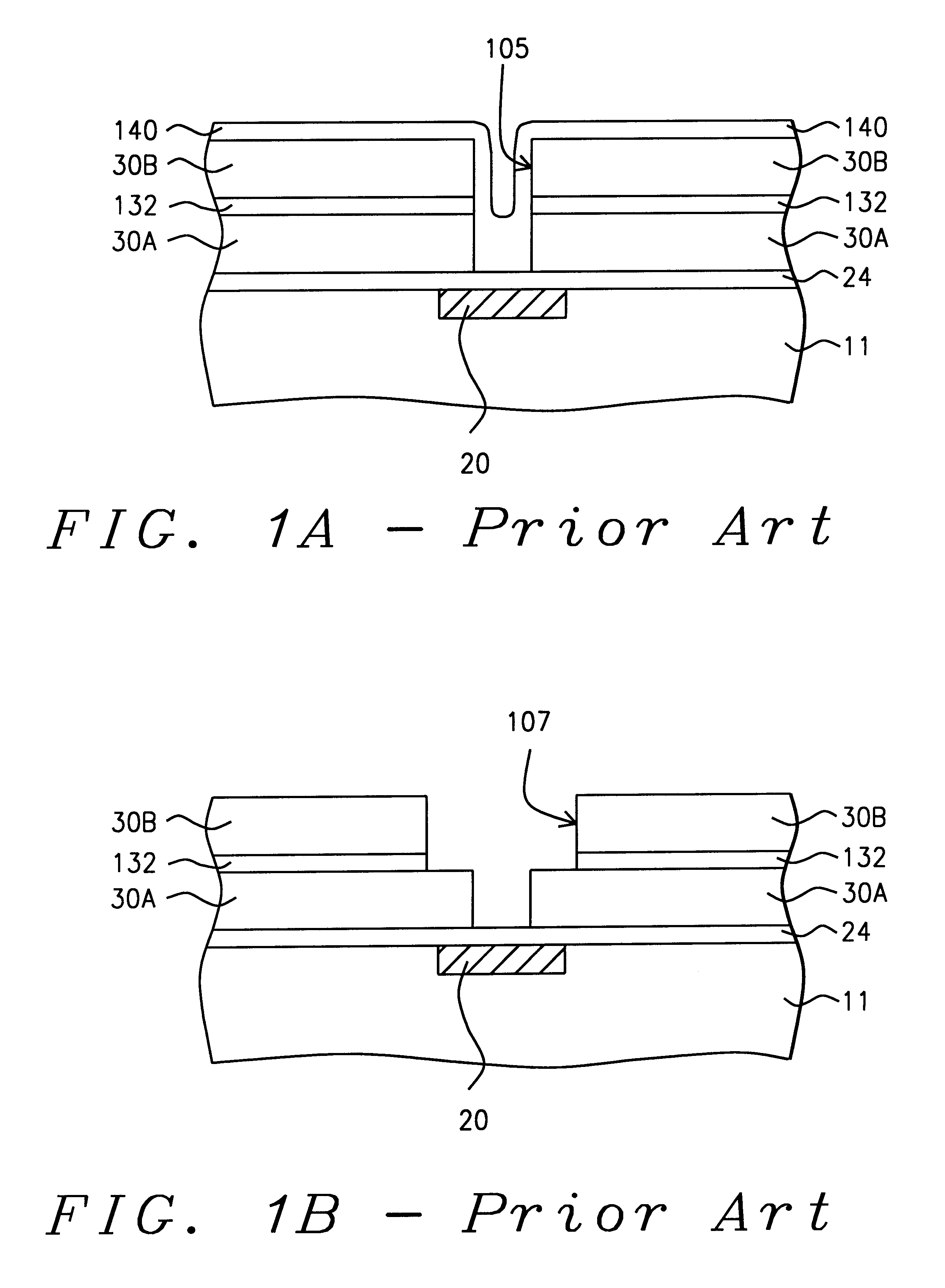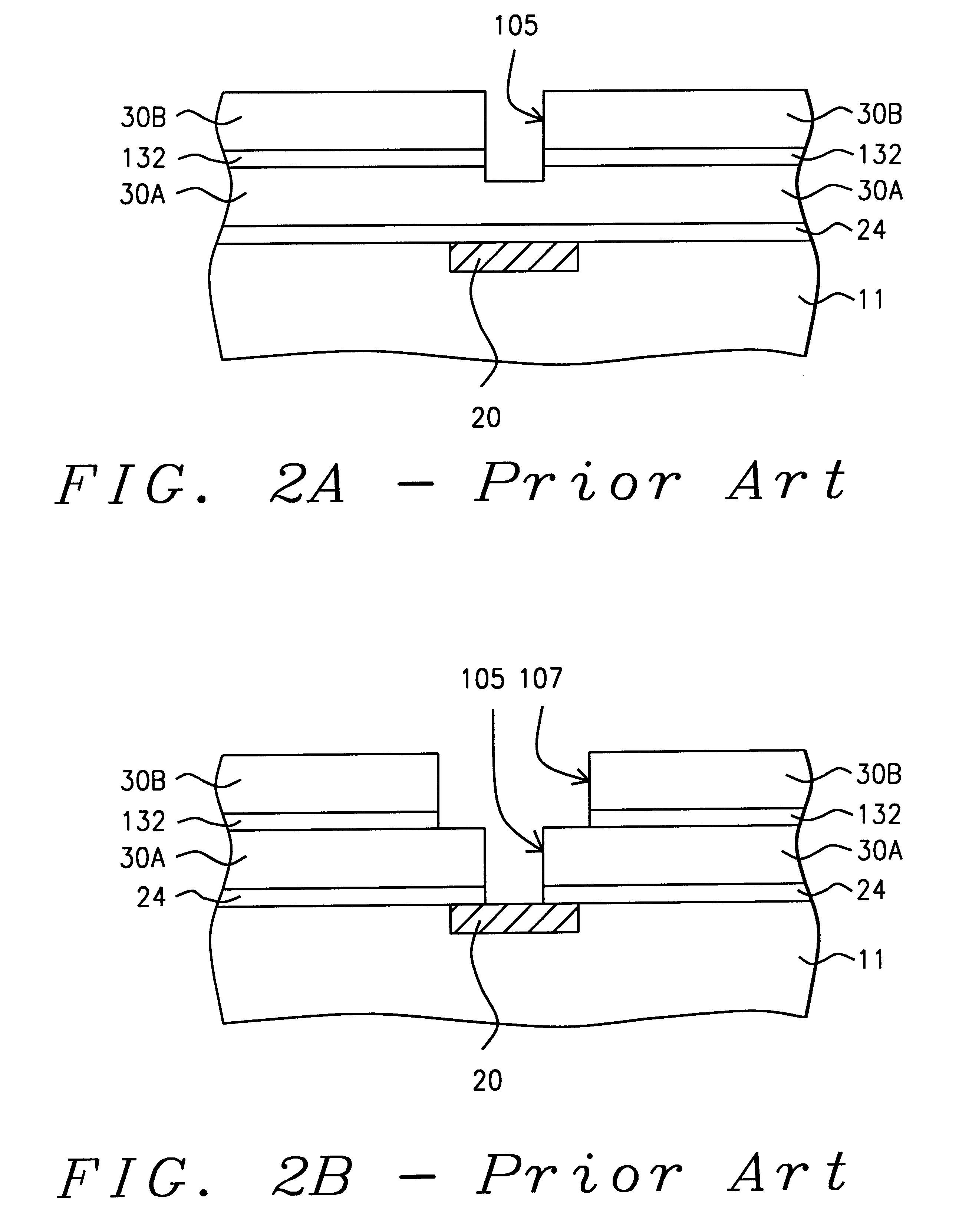Dual damascene process for carbon-based low-K materials
a technology of carbon-based low-k materials and damascene, which is applied in the direction of basic electric elements, semiconductor/solid-state device manufacturing, electric devices, etc., can solve the problems of shortening the device life and reliability, and not enough etch selectivity between the organic low-k material and the bar
- Summary
- Abstract
- Description
- Claims
- Application Information
AI Technical Summary
Benefits of technology
Problems solved by technology
Method used
Image
Examples
Embodiment Construction
-FIGS. 4, 5A, 5B, 6A, 6B & 7
The preferred embodiment of the present invention provides a method for forming a dual damascene structure in a carbon-based, low-K dielectric layer, without causing increased capacitance or damaging the dielectric layer.
Referring to FIG. 4, the preferred embodiment of the present invention begins by providing a semiconductor structure (11). Semiconductor structure (11) should be understood to possibly comprise a substrate comprised of semiconducting material such as silicon or germanium, or a silicon on insulator structure (SOI) as is known in the art. Semiconductor structure (11) should be understood to possibly further include one or more conductive layer (such as metal or silicon) and / or insulating layers, and one or more active or passive devices formed in or over the substrate or the like.
Still referring to FIG. 4, a first metal pattern (20) is formed on the semiconductor structure (11). A first barrier layer (24) is formed on the first metal patter...
PUM
 Login to View More
Login to View More Abstract
Description
Claims
Application Information
 Login to View More
Login to View More - R&D
- Intellectual Property
- Life Sciences
- Materials
- Tech Scout
- Unparalleled Data Quality
- Higher Quality Content
- 60% Fewer Hallucinations
Browse by: Latest US Patents, China's latest patents, Technical Efficacy Thesaurus, Application Domain, Technology Topic, Popular Technical Reports.
© 2025 PatSnap. All rights reserved.Legal|Privacy policy|Modern Slavery Act Transparency Statement|Sitemap|About US| Contact US: help@patsnap.com



